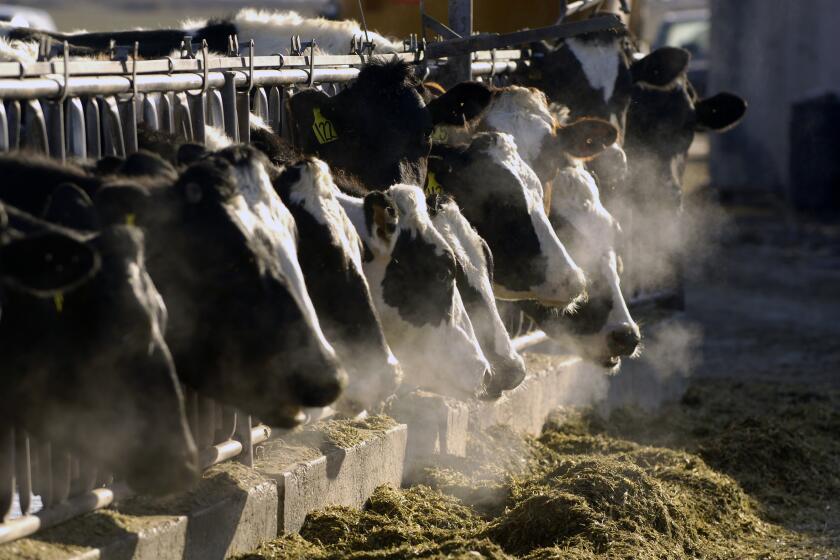When the Measuring Stick Doesn’t Measure Up
- Share via
When my 80-year-old father started working out with a personal trainer, I knew I had to recalibrate the way I measured “old.” Curiously, the process was quite similar to the way astronomers recently had to recalibrate the measuring sticks they use to find out the size, and therefore age, of the universe.
Calibration is central to science because it assures that instruments are measuring what they are supposed to be measuring. Call it a reality check. If something you’re measuring doubles, you want to make sure that the measurement doubles too. If a scale ranges from 0 to 100, you want to make sure that reality falls in the same range. For example, if your bathroom scale counts only one pound for every two you gain, it might make you happy, but you still won’t be able to buckle your belt.
If you think 80 is at the outer edge of “old,” then there’s no place in your scheme of things for an 80-year-old lifting barbells; if you find such a person, you know there’s something wrong with your measuring scheme.
Astronomers recently found themselves in the embarrassing position of measuring a universe that seemed to be younger than its oldest stars. Now, it looks like a recalibration of their measuring sticks may come to the rescue. The rulers they were using to chart the distance to stars were apparently giving the wrong answers.
The bigger the universe is, the older it is--because bigger means it’s been expanding from its origin at the Big Bang for a longer time. If stars are farther away than astronomers thought they were, that means the universe is older than they thought (assuming, of course, that the rate of expansion stays the same--another controversial calibration point).
It would be easy to measure distances in the universe if stars came marked like lightbulbs--say, “60-zillion-watt star.” If you knew the star’s natural brightness, you could calculate how far away it was by measuring how bright it looked. The brighter the star looked, the closer it would be. To make this system work, however, you would need to know how bright the star was to begin with, because a very dim star close by could look the same as a very bright star way off in the distance.
To calibrate their cosmological rulers, astronomers try to find “standard candles,” or stars that are marked like lightbulbs with clues to their intrinsic brightness. Recently, using data from a now-defunct satellite called Hipparcos, astronomers at Caltech found that certain stars previously used as “standard candles” were 15% farther from the Earth than previously thought. This meant that their natural shine had to be about 20% stronger to appear so bright from so much farther away.
And that flaw in the measurement potentially throws off most other, more grandiose, measurements of the size and age of the universe.
Of course, one needn’t be a cosmologist to run into the hazards of miscalibration.
Cooks recalibrate cooking times depending on the altitude of the stove. Teachers use curves to recalibrate grades. A few years ago, the Scholastic Assessment Test was recalibrated because falling test scores meant the average was no longer, well, average. A physicist friend even used his knowledge of pitfalls of calibration to talk his way out of a ticket. He got stopped by a cop who clocked him at 48 mph. The physicist argued that his speedometer read 35; perhaps it wasn’t calibrated properly. It worked.
Physicists know about such things because they, like the rest of us, almost never measure anything directly. Since our brains don’t come equipped with thermometers, we measure temperature by watching the height of a mercury column in a glass tube. We measure speed by the movement of a needle on a gauge.
The more esoteric the measurement, the farther removed it is from the thing you actually measure. If one calibration is wrong, the whole calculation can go out the window.
And just as I had to recalibrate what I meant by “too old” for barbells, biologists recently had to recalibrate what they thought was “too hot” for life. The bacteria they found living in the noxious vents of deep ocean volcanoes were thriving at temperatures thought far too searing for biological molecules to hold together.
No wonder some researchers are ready to believe that life existed on ancient Mars, or perhaps continues to exist on Jupiter’s icy moon Europa. It just means they have recalibrated where they put the center of life in the universe.



